Max G Van Kleek
- Problem Set #1
|
Part 1
|
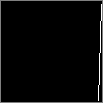 p1.dbn p1.dbn |
// Lean
paper 100
pen 0
line 97 1 100 97
|
| |
Create a program to draw a carefully chosen one line on a paper of your choice.
|
Part 2
|
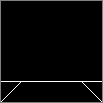 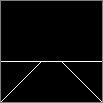 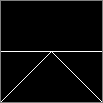 p2.dbn p2.dbn |
// Road
paper 100
pen 0
set a 50
line 0 0 a a
line 100 0 (100 - a) a
line 0 a 100 a
|
| |
Create a program that uses one variable as a means to control a set of 3 lines. Capture 3 instances of the graphic (A,B,C).
|
Part 3
|
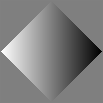 p3.dbn p3.dbn |
// Diamond
paper 50
repeat a 0 50
{
pen a
line a (50 - a) a (50 + a)
}
repeat a 50 100
{
pen a
line a (a - 50) a (150 - a)
}
|
| |
Create a program to draw a single filled rectangle. Again, choose carefully.
|
Part 4
|
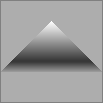 p4.dbn p4.dbn |
// Fujisan
paper 32
repeat a 0 50
{
pen (2*a)
line (50 - a) (80 - a) (a + 50) (80 - a)
}
|
| |
Create a program to draw a single filled triangle. Use your good judgement.
|
Part 5
|
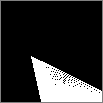 p5.dbn p5.dbn |
// radial
paper 100
pen 0
repeat x 10 100
{
line 40 0 (x + 20) (-1 * (x - 20)/2 + 40)
}
|
| |
Think of all the ways you can draw a filled triangle, and choose one. Utilize the properties of the drawing method you choose, to create a single filled triangle.
|
Part 6
|
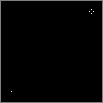 p6.dbn p6.dbn |
// loneliness
paper 100
set [90 92] 0
set [88 90] 0
set [90 88] 0
set [92 90] 0
set [10 10] 0
|
| |
Set 5 dots on a paper of your choice. Evoke an emotion with your choice in placement of dots.
|
Part 7
|
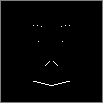 p7.dbn p7.dbn |
// me
paper 100
pen 0
repeat eyebrow 8 10
{
set [(eyebrow * 4), (80 - eyebrow / 2)] 0
set [(100 - eyebrow * 4), (80 - eyebrow / 2)] 0
}
repeat me 1 2
{
set [(me * 24 + 13), 60] 0
}
repeat hana 0 4
{
set [(48 - hana), (40 - hana)] 0
set [(52 + hana), (40 - hana)] 0
}
repeat kuchi 0 18
{
set [(32 + kuchi), (20 - kuchi / 4)] 0
set [(68 - kuchi), (20 - kuchi / 4)] 0
}
|
| |
Create a representational picture (i.e. something that looks like something) using just 8 (at maximum) dotted lines.
|
Part 8
|
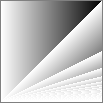 p8.dbn p8.dbn |
// modulus
// uses dbn's integer-division
// to compute (x mod y) and display the
// result as an intensity.
repeat a 1 100
{
repeat b 1 100
{
set [a,b] (a - (a / b) * b)
}
}
|
| |
Using a nested loop, fill the entire field with the value of some calculation that can be appreciated. Do not use the Line command.
|
Part 9
|
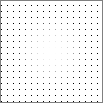 p9.dbn p9.dbn |
// Hikari
paper 0
repeat a 0 20
{
repeat b 0 20
{
set [(6 * a), (6 * b)] (((6*a - 50)*(6*a - 50) + (6*b - 50)*(6*b - 50)) / 13)
}
}
|
| |
Using a nested loop, create a stippled pattern of dots that can be enjoyed for its complexity. Do not use the Line command.
|
Part 10
|
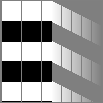 p10.dbn p10.dbn |
// type program here
// Lab
paper 50
set wh 20
repeat h 0 50
{
repeat v 0 2
{
pen 0
line h (v * 40) h (v * 40 + wh)
pen 100
line h (v * 40 - 20) h (v * 40 + wh - 20)
// Side of building
pen h
line (50 + h) (v * 40 - h/2) (50 + h) (v * 40 + wh - h/2)
}
}
pen 50
repeat h 0 3
{
line (h * 20) 0 (h * 20) 100
}
repeat h 1 4
{
line (60 + h * 10) 0 (60 + h * 10) 100
}
|
| |
Using the Line command, and a (few) nested loop, create an image that evokes a three-dimensional feeling through shading.
|
 p1.dbn
p1.dbn 

 p2.dbn
p2.dbn  p3.dbn
p3.dbn  p4.dbn
p4.dbn  p5.dbn
p5.dbn  p6.dbn
p6.dbn  p7.dbn
p7.dbn  p8.dbn
p8.dbn  p9.dbn
p9.dbn  p10.dbn
p10.dbn